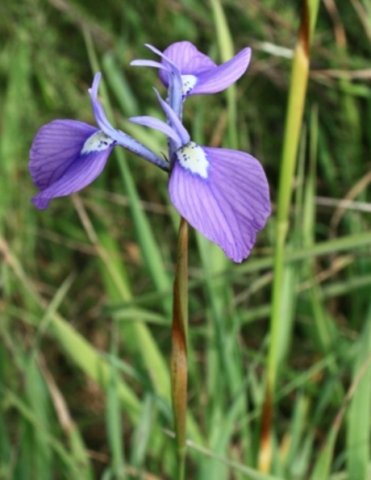Moraea tripetala

Author: Ivan Lätti
Photographer: Alet Steyn
Moraea tripetala is a slender perennial reaching heights from 20 cm to 45 cm. As is common in its genus, the underground perennial component is a corm covered in a fibred tunic.
The single, narrow leaf of this deciduous geophyte grows annually with the flower stem from the corm. The leaf is sometimes hairy on its lower surface and usually solitary, rarely appearing in pairs. The leaf is often longer than the stem, but rarely manages to remain erect.
Flowers of the species are not scented like some of the other members of the genus. Pollination is mainly done by bees.
The species distribution is in the Western Cape, slightly into the southwest of the Northern Cape on the Bokkeveld Plateau to the Cape Peninsula and the western Karoo. This picture was taken near Matjiesfontein.
The variable habitat includes fynbos, renosterveld and succulent Karoo on sandy and clayey flats and slopes where there is much or little winter rain and hot, dry summers. Two of the three subspecies have habitat populations deemed of least concern early in the twenty first century, the third near threatened, due to urban development and agriculture (Manning, 2009; iNaturalist; www.plantzafrica.com; http://redlist.sanbi.org).

